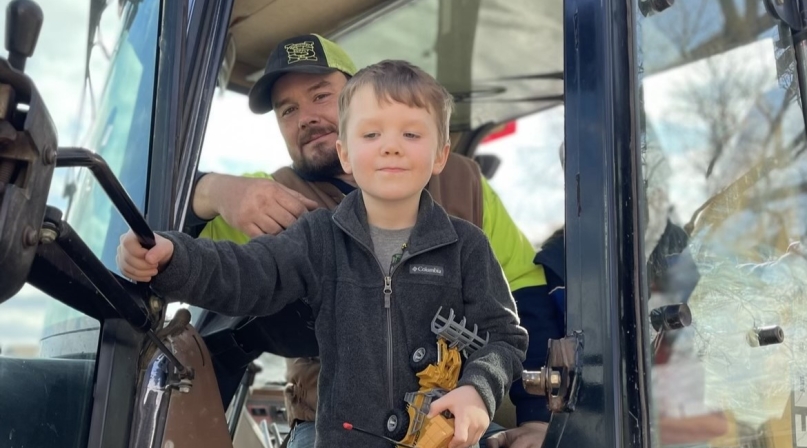Rural counties attract new residents with incentives

Key Takeaways
Kansas counties are investing in their future through the “Rural Opportunity Zone” program, which offers state income tax credits and up to $15,000 in student loan repayment assistance to people who move to and create roots in rural counties.
The Rural Opportunity Zone (ROZ) program has been around since 2011, but because of a lack of marketing and stringent eligibility requirements, it hasn’t had as much of an impact on population growth as it set out to.
The Kansas Department of Commerce’s Office of Rural Prosperity, which took over the program from the department’s Community Development office nearly two years ago, is working to change that.
Last month, the Kansas Department of Commerce updated the program’s eligibility requirements, changing the window of time for participants to live outside a participating county from five years to two years, and language was clarified to better define someone’s “permanent residence” outside of the county.
Previously, people who had a driver’s license with an address in a participating ROZ county weren’t eligible for the program, regardless of how long they had been living outside of the county, disqualifying many people who had temporarily moved away for school or employment, but never formally changed their address, according to Trisha Purdon, director of the Office of Rural Prosperity.
One young attorney in Montgomery County was denied entry to the program, despite the county’s need for legal professionals.
She had not updated her driver’s license in the seven years she was away at college and law school because her father was an elected official and she wanted to be able to vote for him in each election.
“We kept seeing these perfect people that were trying to go through this process, and then were getting denied due to odd things,” Purdon said.
“… I was able to dig into the original statute and work with our legal team and our administration to really analyze the original intent of the program, to address these people that were obviously critically needed people in these rural communities.”
People who move into a ROZ county from out of state are potentially eligible for a tax credit to cover 100% of their personal state income taxes through the duration of the program.
For every 25 cents the state spends on a ROZ participant, the state gets back $3.85 in added value, through property taxes, sales taxes and income taxes.
The updated framework will allow more people to participate in the five-year program, which currently has 221 active participants, 123 people on the waitlist to get approved and enough funding for 500, according to Purdon.
The average student loan debt in Kansas is $32,160, according to 2023 Federal Student Aid data, and the difference of $15,000 in student loan repayment has proven to be life-changing for many ROZ participants.
Between 2012 and 2022, 1,670 people enrolled in the program, receiving a total of roughly $13.3 million.
For Trent Weinman, ROZ has done more than give him some extra pocket change — it’s carved his life’s path.
When he graduated college, Weinman debated whether he wanted to create a life in Kansas City or return to his hometown of Phillipsburg in Phillips County, Kansas.
After learning that the program could help him pay off his student loans, he moved back to Phillips County and enrolled in ROZ, which he said “definitely influenced” his decision to then settle down, get married and have a family.
“It really had an impact on my entire life,” Weinman said. “... And I don’t think I’d be here in this community without [ROZ], that’s just the truth.
“Me being able to ease that financial burden, to be able to whittle my loans down that much, made a payment manageable enough to where I could raise my family in the community that I wanted to, which is a rural zone.
“In a rural community, everybody raises your kids — like I was yelled at by the neighbors when I was doing things that were wrong, and everybody kind of looked out for each other, so I wanted that for my kids.”
According to an audit of the program, around 1,430 individuals moved to ROZ counties between 2012 and 2022 specifically for the program, like Weinman, while the remaining individuals would have moved to the counties regardless.
Republic County resident Ashleigh Brandenburgh falls into the latter category.
Having spent her whole life in Topeka, Brandenburgh never envisioned herself living in a rural county, but after her sister passed away, she uprooted her life and moved to Republic County, where the population is under 5,000, to help raise her sister’s children.
Because of the ROZ program, she was able to buy a house instead of renting — something she never thought she would do.
Although she hasn’t fully paid off her student loans yet, the program’s helped with a “good chunk” of it and it prevents her from having to worry about how she’ll be able to make payments each month, she said.
While 95 of Kansas’ 105 counties are designated “Rural Opportunity Zones,” some of them don’t provide any actual funding toward the program, but instead allow employers to sponsor people through ROZ; 40 counties contribute to the fund, the amount of which the state then matches.
“Some of these counties are like, ‘I don’t want to pay for somebody else’s schooling,’” said Jenny Russell, Republic County’s economic development board director.
“Well, here’s what you’re not understanding is, yes, you’re helping them to pay for their schooling, but you’re also helping them to buy a house, helping them to be able to have kids earlier, you’re allowing them to volunteer more, so it’s multifaceted.”
According to Kansas Department of Commerce data, ROZ has sustained 806 jobs in an 11-year period — nearly 50% of which are in the education or healthcare sector. Engineering is also a large sector for the program, according to Purdon.
Weinman said he appreciates what ROZ did not only for him, but also what it’s doing for the community by bringing college-educated people back into the county.
“That’s what this town was really missing,” Weinman said. “Everybody would flee and go to these cities, because of the paying jobs and the burden of student loan debt — I mean, you just can’t do it on most rural wages. You take the $15,000 off, it helps so much.”
Weinman is glad to see the program widen its eligibility requirements, so that more people can take advantage of the benefits and move to rural areas, whether they’re from there or not.
“I think any opportunity to get those younger families into these communities that are aging is so important,” Weinman said. “To continue the traditions, to continue the smaller community lifestyles.”
The Office of Rural Prosperity is investing more time and resources into marketing the program.
It hired a firm to determine which states across the country are most likely to have residents move to Kansas, based on geographic patterns, and is targeting recruitment for critical jobs needed in rural areas, like healthcare and education.
The Office of Rural Prosperity is also focusing out of state relocation advertising in Arkansas, Colorado, Missouri, Nebraska, Oklahoma and Texas, because of their proximity, and plans to work with the Kansas Department of Commerce’s tourism division to target people who have shown interest in visiting Kansas or who have graduated from a Kansas school, according to Purdon.
While Republic County’s population has dropped slightly since the county joined the program in 2011, Russell – who firsthand has seen how limiting the previous qualifications were — said the new changes to ROZ are encouraging, and the county has six people currently going through the new application process. She can see a tide shifting, she said.
“I really feel like rural areas can grow, and I actually feel like we’re on the cusp of that right now, which is so exciting,” Russell said.
“… I have lived in this region for my entire life, pretty much, and I’ve never lived in a rural community that has grown, so it’s really cool to see that.”
Caleb Breon, Phillips County Economic Development’s executive director, said he sees the program as a tool to both aid Kansas’ current issue of dwindling populations in rural counties and to create more of a culture around people returning to their rural communities.
“It’s a way to set us up for the long-term,” Breon said. “It obviously helps fix some things now, but having this in place as kids get older, they start to understand what incentives are available for them to take advantage of, so maybe it’ll encourage them to come back home and contribute to their community and set up the next generation, and the cycle just keeps continuing.
“And I feel like for the most part, [participants] are here to stay,” he added.
Brandenburgh, who’s in her fourth year of the program, said she’ll be in Republic County long after her student loan payments expire.
“The county is my home now,” she said.
Related News

Congress Passes Landmark Outdoor Recreation Package
Lawmakers passed the bipartisan EXPLORE Act (H.R.6492) on December 19 to boost outdoor recreation opportunities on public lands for county residents and visitors and aid gateway communities

Counties Applaud Passage of WRDA/EDA Package
Omnibus package will advance county interests in economic development, water infrastructure

Congressional movement on flawed workforce reauthorization legislation
The U.S. House Education and Workforce and U.S. Senate Health, Education, Labor, and Pensions Committee leadership released their bipartisan, bicameral agreement to reauthorize the Workforce Innovation and Opportunity Act (WIOA) – A Stronger Workforce for America Act. Congressional leadership is now working to gain support for the negotiated bill text during the lame duck session.
County News
Moving incentives draw remote workers

